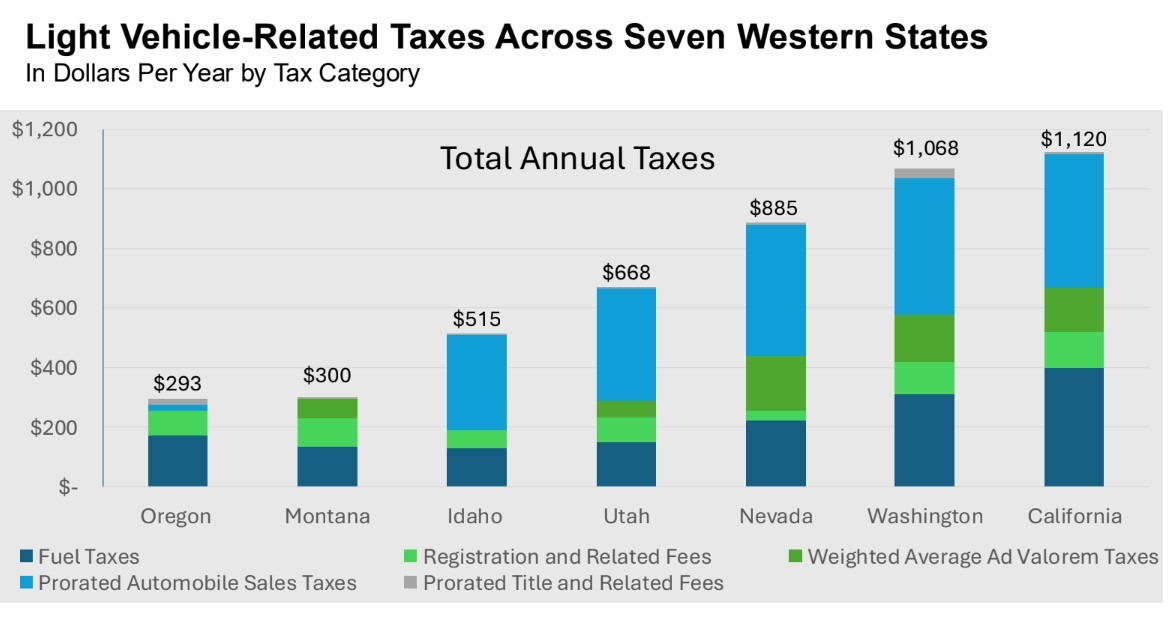| As regular readers know, the regular 2025 session failed to resolve shortfalls in transportation funding despite consideration of several detailed and long-debated proposals. A massive plan that would have raised taxes on vehicle sales, hiked the gas tax by 12 cents per gallon, and increased a variety of other taxes and fees died on the session’s final day when it became clear its price tag — $14.6 billion over a decade — was too high and lacked votes to secure passage.
The huge and complex ODOT budget silos funds into categories depending on the source of those funds. Some taxes are dedicated to mass transit. Some federal dollars are committed to specific projects. Half of the Highway Trust Fund is committed to local government. That makes it impossible to move money around.
Rather than use funds otherwise committed to schools, health care, or wildfires, we expect people who use our roads to pay for them. Road maintenance at both the state and local level is largely funded by gas taxes. When people drive less or use cars that don’t rely on gasoline, gas tax revenues decline. At the same time, the cost of road repairs is going up.
I well understand that many Oregonians have trouble paying for groceries or utilities or finding housing they can afford. Costs are up on everything, and no one likes to pay more in taxes. But I also worry that this winter, as fog lines fade, potholes proliferate, snow and ice accumulate, and response to slides or accidents is slower, highway safety may become much more important to most Oregonians. Too many accidents are occurring on our local roads, and too many lives are being lost.
Agency leaders say they plan to scale back pothole repairs, road striping, litter pickup, snow plowing, and other services as they work to close a $354 million funding gap. Roughly 10% of the agency’s workforce received layoff notices this month. State transportation leaders informed 483 workers that their jobs will go away at the end of July.
Governor Kotek has now decided to delay those layoff for 45 days while the legislature considers a new, scaled back transportation plan.
- Increasing the state’s 40-cent gas tax to 46 cents, splitting that difference between the state transportation department and local governments. The state would receive 50% of the increase, Oregon’s 36 counties would get 30% and cities would receive 20%.
- Committing to implementing a per-mile charge for electric vehicles and hybrids at some point in the next few years.
- A $42 increase to vehicle registration fees, which now range from $126 to $156 depending on a car’s age and miles per gallon and a $30 supplemental fee for electric vehicles, which now cost $316 to register for two years.
- A $139 increase to the state’s title fee, which now ranges from $101 to $116 for gas cars or $192 for electric vehicles.
- Increasing the current 0.1% payroll tax for transit to 0.2% to fund mass transit, primarily in rural areas.
- Repealing references to tolling left over from a 2017 transportation package (although tolling would help generate revenue from out-of-state visitors).
Oregon ranks dead last among the seven states in the American West for the amount of money we put into our transportation system. This new proposed plan would still leave us paying less than drivers in Idaho or Nevada and much less than California and Washington who pay more than three times as much in vehicle-related taxes than Oregonians. |











